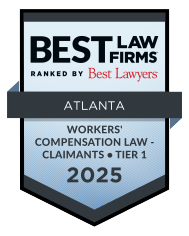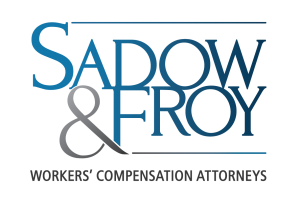
Bulging vs. Herniated Discs – Causes and Symptoms
We meet many clients with diagnoses of bulging or herniated discs. Although both have to do with the spine, the two conditions are not alike. A bulging disc is like a tire with the air let out. The disc sags and looks like it is bulging or protruding outward. Yet, the outer layers of the disc remain intact. When someone has a herniated disc, there is an actual “tear in the tire”. This causes a jelly-like substance to leak out from the disc into the spinal canal which can compress the nerve root or the spinal cord.
Bugling discs usually develop over time and impact multiple discs. They are degenerative in nature. it is important to note that bulging discs that were previously asymptomatic may become symptomatic after on-the-job injuries. If a work-related accident aggravates a pre-existing bulging disc, this is a compensable injury under Georgia workers’ compensation law. Bulging discs can also be caused by neck or back strain brought on by repetitive movements, lifting heavy objects, and trauma such as a blow to the neck or back. Treatment for bulging discs typically includes physical therapy, anti-inflammatory medication, and epidural steroid injections.
Although herniated discs may be caused by age-related wear and tear, they can also be caused by an acute work-related accident. Disc herniations typically involve one disc and one individual nerve root. Herniated discs are most common in the cervical and lumbar spine. Twisting, turning, lifting injuries and auto accidents are frequent causes of herniated discs. Treatment options for herniated discs include physical therapy, anti-inflammatory medication, and epidural steroid injections. However, if these modalities do not give effective pain relief, lumbar surgery may be recommended.
Common symptoms of cervical herniated discs include pain shooting down the arm to the fingertips and numbness, tingling, or weakness in the shoulder, hand, or arm. Some people may experience more severe pain at night.
Common symptoms of herniated lumbar discs include pain in the low back, buttocks, hamstring, calf, or feet with numbness or tingling in the affected leg, pain down the leg, weakened leg muscles, and burning or sharp pain in the leg that worsens after standing for long periods of time. Difficulty with bladder or bowel control or difficulty lifting the feet can also be symptoms of herniated lumbar discs.
If you, a loved one, or a family member are experiencing bulging or herniated discs as a result of an accident at work, prompt medical treatment is critical to your recovery. The experienced lawyers at Sadow & Froy will fight to get you the treatment that you need. Don’t let the workers’ compensation insurer give you the run around in your workers’ compensation case!


